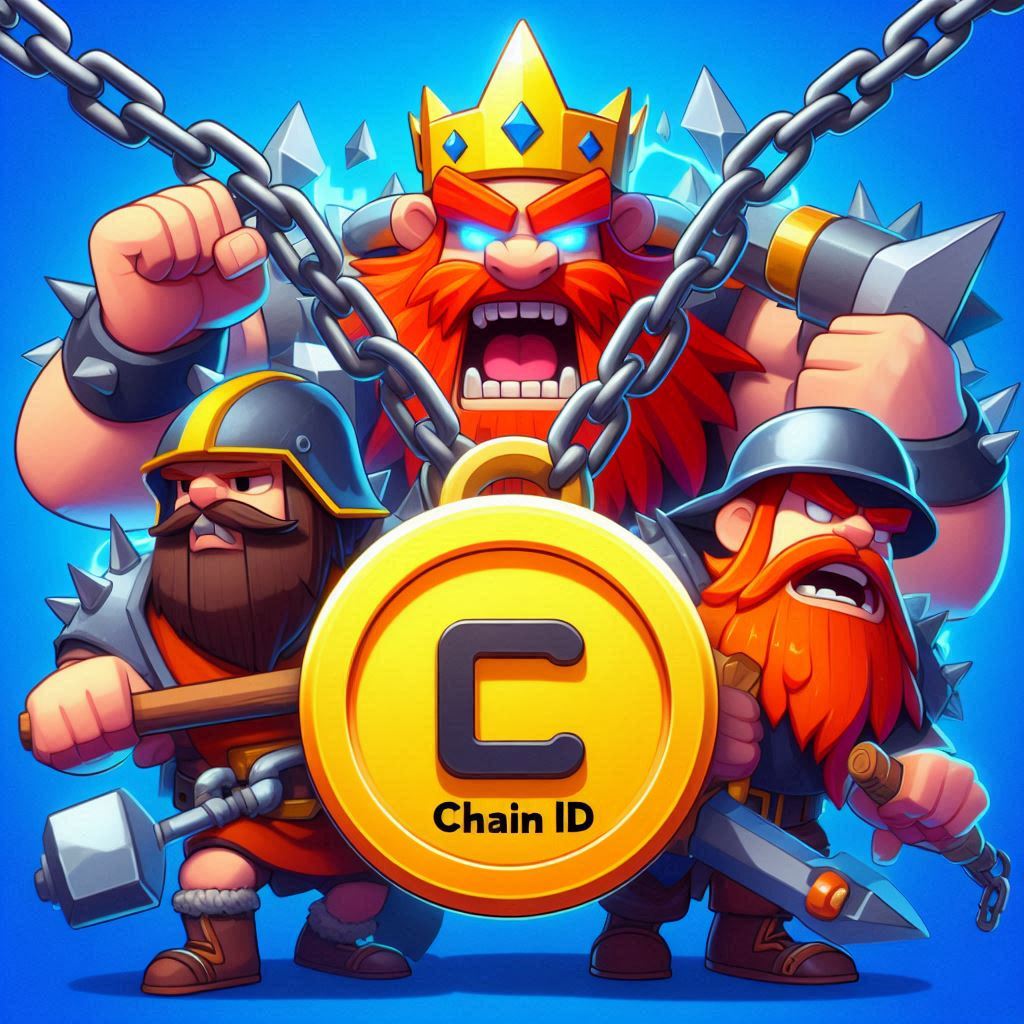Chain ID
In the ever-evolving world of cryptocurrency, one crucial concept that has gained significant attention is the Chain ID. Understanding the importance of Chain ID is essential for anyone delving into the crypto ecosystem, as it plays a vital role in the interoperability and security of blockchain networks.
Chain ID, also known as a Network ID or a Chain Identifier, is a unique numeric value assigned to a specific blockchain network. This identifier serves as a distinguishing marker, allowing different blockchain networks to be easily identified and differentiated from one another. The Chain ID is a crucial component that ensures the seamless integration and communication between various blockchain platforms, enabling the smooth exchange of information and assets. The primary purpose of the Chain ID is to provide a means of verifying the authenticity and integrity of a blockchain network. By leveraging the Chain ID, users can be confident that they are interacting with the intended blockchain, rather than a malicious or fraudulent network. This level of trust is essential in the decentralized world of cryptocurrency, where the security and reliability of the underlying infrastructure are paramount.
Chain IDs are typically assigned during the initial deployment of a blockchain network and are maintained throughout its lifespan. These unique identifiers are often included in the transaction data, allowing nodes within the network to correctly validate and process the transactions. Additionally, the Chain ID is used by wallet applications, exchanges, and other crypto-related services to ensure that users are interacting with the correct blockchain. One of the key benefits of the Chain ID is its role in enabling cross-chain compatibility and interoperability. As the blockchain ecosystem continues to expand, with the emergence of numerous specialized networks, the ability to seamlessly transfer assets and data across these platforms becomes increasingly crucial. The Chain ID serves as a bridge, facilitating the communication and integration between different blockchain networks, allowing for a more cohesive and interconnected crypto landscape.

Ethereum, one of the most prominent blockchain networks, utilizes the Chain ID to differentiate between its various environments, such as the Ethereum mainnet, Ethereum testnets (Rinkeby, Kovan, Görli), and other Ethereum-based networks. By assigning unique Chain IDs to these different environments, Ethereum ensures that users can reliably interact with the intended network, preventing accidental or malicious transactions. The importance of Chain ID extends beyond the Ethereum ecosystem. Other popular blockchain networks, such as Bitcoin, Binance Chain, Polygon, and Solana, also employ Chain IDs to identify their respective networks. This standardized approach to network identification helps to maintain the overall integrity and security of the crypto landscape, fostering trust and confidence among users.
In the context of wallet applications and crypto exchanges, the Chain ID plays a crucial role in ensuring the accurate and secure transfer of assets. When sending or receiving cryptocurrencies, the wallet software or exchange platform utilizes the Chain ID to verify the destination network and prevent funds from being inadvertently sent to the wrong blockchain. Furthermore, the Chain ID is instrumental in the development and deployment of decentralized applications (dApps) on various blockchain networks. Developers must take into account the specific Chain ID of the target blockchain when building and integrating their dApps, ensuring that the applications function correctly and communicate seamlessly with the underlying network.
As the cryptocurrency industry continues to evolve, the importance of the Chain ID will only continue to grow. With the emergence of layer-2 scaling solutions, cross-chain bridges, and the increasing adoption of multi-chain strategies, the ability to accurately identify and interact with different blockchain networks becomes increasingly crucial for the overall success and stability of the crypto ecosystem. Maintaining and managing the Chain ID is a responsibility shared by the blockchain network operators and the broader crypto community. Network developers are tasked with ensuring the consistent and reliable assignment of Chain IDs, while users and service providers must stay informed and up-to-date on the Chain IDs of the networks they interact with.
In the context of blockchain analysis and exploration, the Chain ID plays a vital role in providing valuable insights into the activity and performance of various cryptocurrency networks. By tracking and analyzing the Chain ID data, researchers, analysts, and enthusiasts can gain a deeper understanding of the overall health, adoption, and usage patterns of different blockchain ecosystems. The standardization and adoption of Chain ID across the cryptocurrency landscape have been instrumental in driving interoperability and fostering a more interconnected crypto ecosystem. As the industry continues to evolve, it is expected that the significance of the Chain ID will only continue to grow, becoming an integral part of the underlying infrastructure that supports the future of digital assets and decentralized finance.
For developers and blockchain engineers, understanding the concept of Chain ID is essential when building applications and integrating with multiple blockchain networks. Proper implementation and management of Chain ID within their projects can help ensure seamless cross-chain functionality, reduce the risk of user error, and contribute to the overall stability and reliability of the crypto ecosystem. In conclusion, the Chain ID is a fundamental component of the cryptocurrency landscape, serving as a unique identifier that enables the safe and efficient operation of blockchain networks. By understanding the significance of Chain ID, users, developers, and industry stakeholders can navigate the crypto ecosystem with greater confidence, fostering a more robust and interconnected digital asset landscape.

As the cryptocurrency industry continues to evolve and expand, the role of the Chain ID will only become more crucial. By staying informed and up-to-date on the latest developments in Chain ID management and implementation, individuals and organizations can position themselves for success in the ever-changing world of digital assets and decentralized finance. Beyond its primary role in network identification and interoperability, the Chain ID also plays a crucial part in the security and governance of blockchain networks. When validators or nodes within a blockchain network verify transactions, they rely on the Chain ID to ensure that the transactions are being processed on the intended network, rather than a malicious or unauthorized chain.
This verification process is essential in preventing various types of attacks, such as 51% attacks, where a group of malicious actors attempt to gain control of a blockchain network. By using the Chain ID as a validation checkpoint, the network can effectively identify and reject any transactions or blocks that originate from a different, potentially compromised chain. The importance of the Chain ID in governance and decision-making processes cannot be overstated. In decentralized blockchain networks, governance decisions, such as protocol upgrades or parameter changes, often require the participation and consensus of the network’s stakeholders. The Chain ID serves as a crucial identifier, ensuring that only legitimate votes and proposals are considered and implemented, maintaining the integrity of the network’s governance.
As the cryptocurrency industry matures, the management and oversight of Chain IDs have become increasingly complex. Network operators and industry organizations have collaborated to establish standards and best practices for assigning, maintaining, and communicating Chain IDs to ensure consistency and transparency across the ecosystem. One such initiative is the Enterprise Ethereum Alliance (EEA), a global community of leading organizations that has developed a standard for Chain ID management within the Ethereum ecosystem. The EEA’s Chain ID Registry provides a centralized repository of official Chain IDs for Ethereum-based networks, helping to mitigate the risk of confusion or conflicts between different Ethereum-compatible chains.
Similarly, the Interchain Standards (ICS) framework, developed by the Interchain Foundation, offers a comprehensive set of standards and guidelines for managing Chain IDs and promoting interoperability across various blockchain networks. The ICS standards help to ensure that Chain IDs are consistently and transparently assigned, reducing the potential for ambiguity or disputes within the broader crypto landscape. As the crypto industry continues to evolve, the importance of Chain ID management will only continue to grow. Emerging trends, such as the rise of decentralized autonomous organizations (DAOs), multi-chain architectures, and the increasing focus on cross-chain interoperability, will further emphasize the criticality of reliable and standardized Chain ID practices.
Going forward, the continued development and refinement of Chain ID management protocols, as well as the collaborative efforts of network operators, developers, and industry organizations, will be essential in ensuring the long-term stability, security, and interoperability of the cryptocurrency ecosystem. By prioritizing the proper handling and governance of Chain IDs, the crypto community can pave the way for a more seamless and trustworthy digital asset landscape.

Our game development Team has developed a 3D online Android game based on blockchain technology. Players can Earn Money by competing with each other through the game. Visit our YouTube channel for more information. Also click to download our TanKash game.



